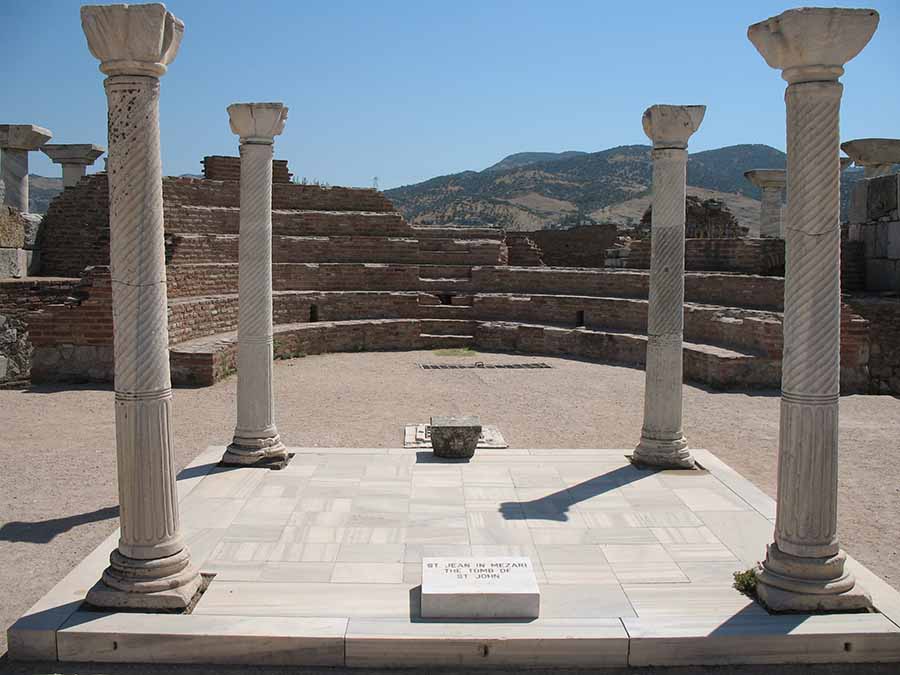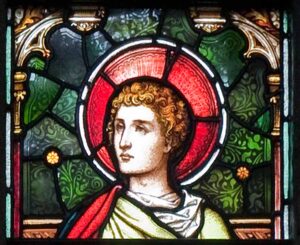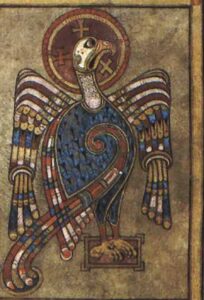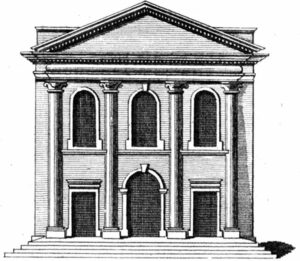

A whistle-stop tour of places associated with St John the apostle for his feast day, December 27.
- Selçuk, Turkey: Located near Ephesus, Selçuk was home to the ancient Basilica of St. John and one of the most important pilgrimage destinations for early Christians. constructed by Justinian I in the 6th century. It stands over the believed burial site of John the Apostle and was modelled after the now lost Church of the Holy Apostles in Constantinople. It became an important pilgrimage destination because St. John was believed to be sleeping beneath his tomb instead of being dead and, each time he breathed, the dust around his altar would stir, which was considered holy and known as manna. It was believed to have the power to cure the sick. Pilgrimages were made to St. John’s tomb, especially during the all-night festival held in his honour on the feast of the miracle, 8 May. Pilgrims would collect the dust from the tomb in special flasks, which were believed to possess miraculous abilities to cure sickness and calm storms. Two ancient Irish saints are recorded as travelling on pilgrimage to “Slánchotlud lohannis i nEfis,” as it was described in old Irish.
- Patmos, Greece: Saint John is traditionally believed to have written the Book of Revelation while in exile on the island of Patmos. The Cave of the Apocalypse, where he is said to have received the divine revelations, is a popular site for visitors.
- Rome: Rome is associated with many biblical figures, including Saint John the Apostle. It is believed that he travelled to Rome and was later exiled to Patmos. John was banished (presumably to Patmos) after being plunged into boiling oil in Rome and suffering nothing from it. It is said that all in the audience of Colosseum were converted to Christianity upon witnessing this miracle. O’Neill and O’Donnell prayed at relics of the evangelist at St John Lateran church in 1605.
- Jerusalem: As one of the Twelve Apostles, Saint John was present during Jesus’ crucifixion and played a vital role in the early Christian community. Jerusalem holds historical and spiritual significance in the life of Saint John.

- Kilkenny: the Augustinian abbey of St john the Evangelist is an important land mark in the town, giving its name to a bridge, a parish and a hurling team.
- Istanbul: The city of Istanbul, previously known as Constantinople, was an important centre for early Christianity. Saint John the Apostle’s influence and teachings had an impact on the early Christian community in this city.
- Knock: St John the Evangelist was one of three figures who appeared to two young Knock women on 21 August 1879, alongside a vision of Mary, Joseph and a sacrificial lamb upon an altar, freeze-framed in dazzling white light against the southern gable of the parish church.
- Pergamon, Turkey: Pergamon was an ancient city where the early Christian community thrived. Saint John wrote one of his letters to the church in Pergamon, addressing various issues and offering guidance.
- Corinth, Greece: Saint John’s teachings reached the city of Corinth in Greece. The Corinthian community received two of his letters, which are now part of the New Testament.
- Colossae, Turkey: Saint John wrote a letter to the church in Colossae, addressing the challenges and doctrines facing the early Christian community. Colossae is located near modern-day Honaz in Turkey.

- Dublin’s south inner city: the parish of John the Evangelist was located around Fishamble St and was “erected into a prebend with cure of souls in the cathedral of Christ-Church,” in 1554. The parish church at the corner of John’s Lane was dedicated in 1168, rebuilt in 1773, closed in 1878, and demolished in 1884.
- Laodicea, Turkey: Another significant destination associated with Saint John is Laodicea, an ancient city in Turkey near the modern city of Denizli and one of the seven churches of Asia mentioned in John’s Book of Revelation. The epistle of Paul to the Laodiceans infers that, as in Ephesus, there was an existing community of Christians devoted to St john the apostle.
- New York: The Cathedral of St. John the Divine, St. John’s or “St. John the Unfinished” is the cathedral of the Episcopal Diocese of New York. The largest (or second largest) Anglican cathedral in the world and the sixth largest overall, it has been under construction since 1892.



